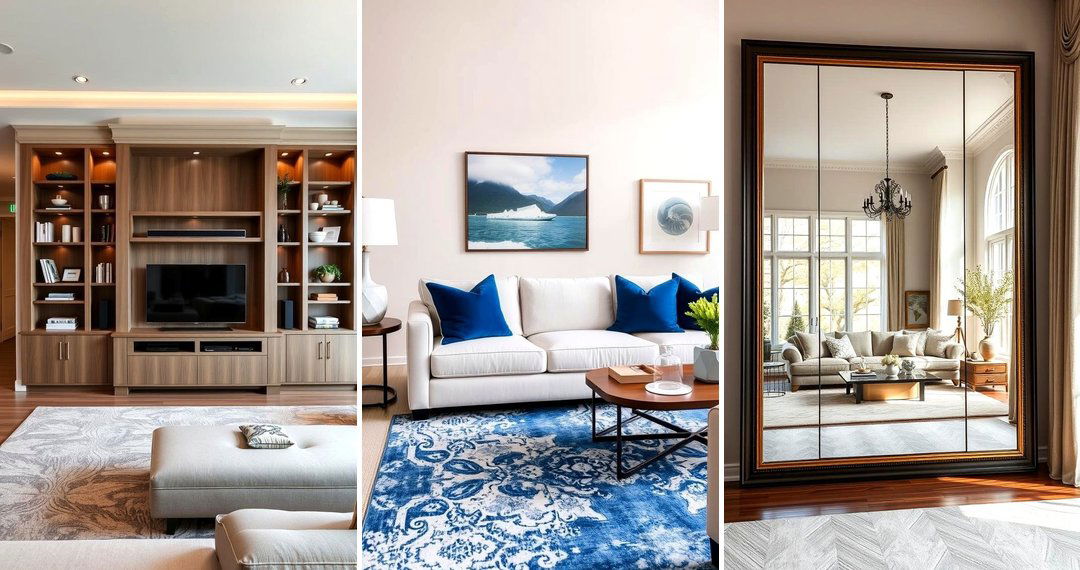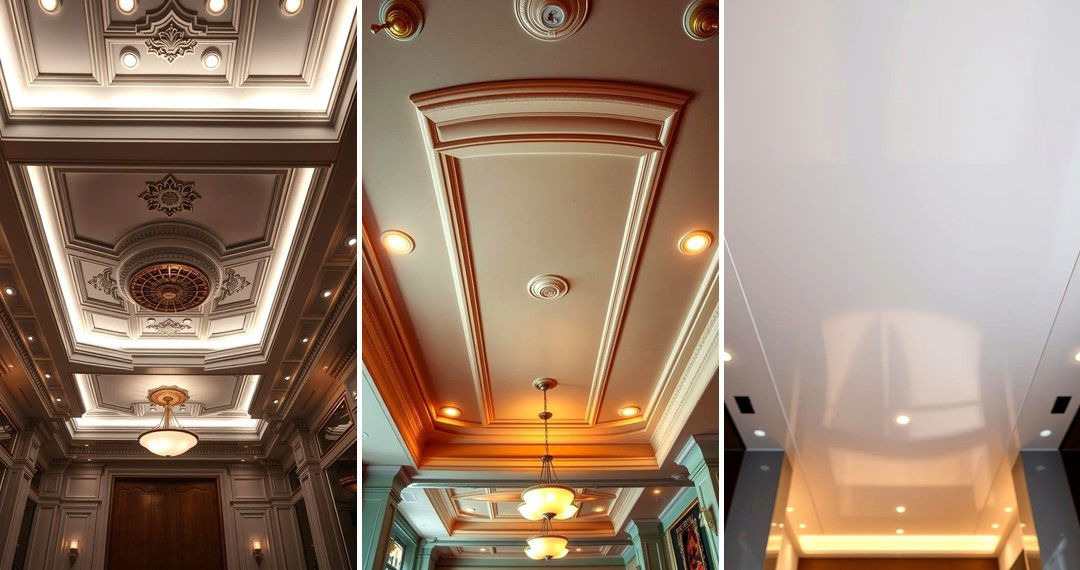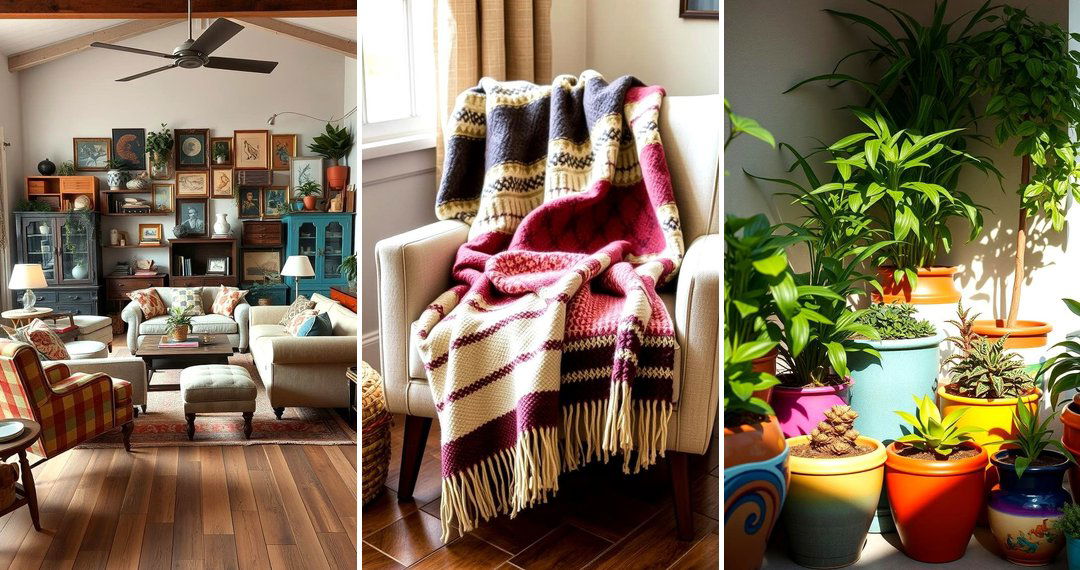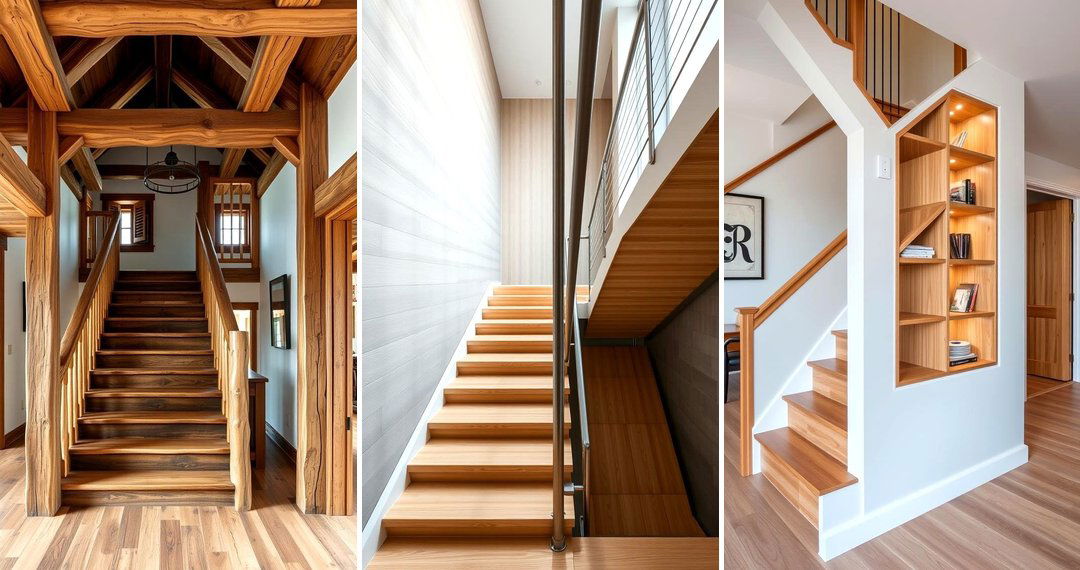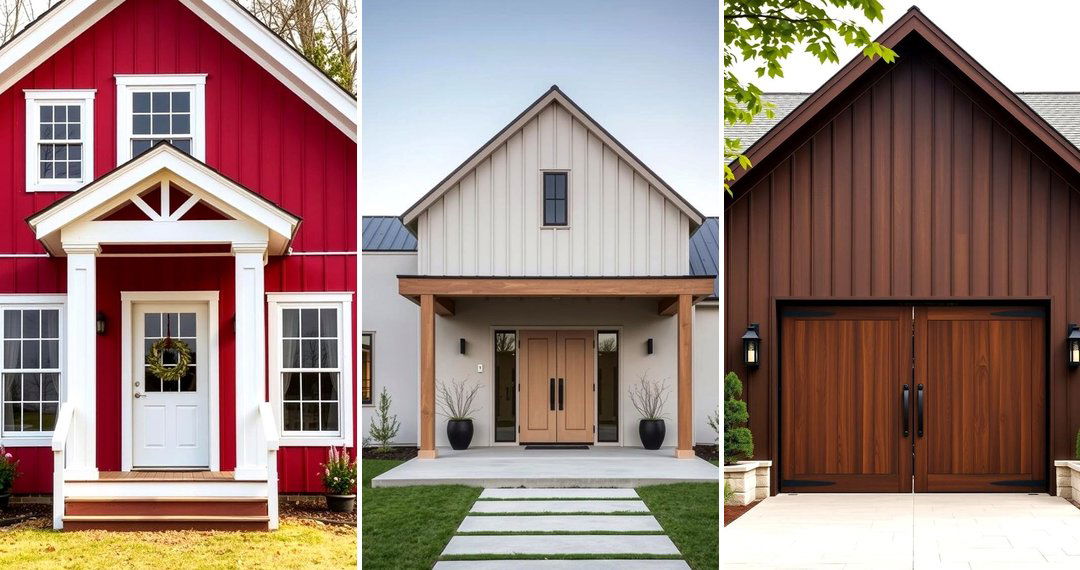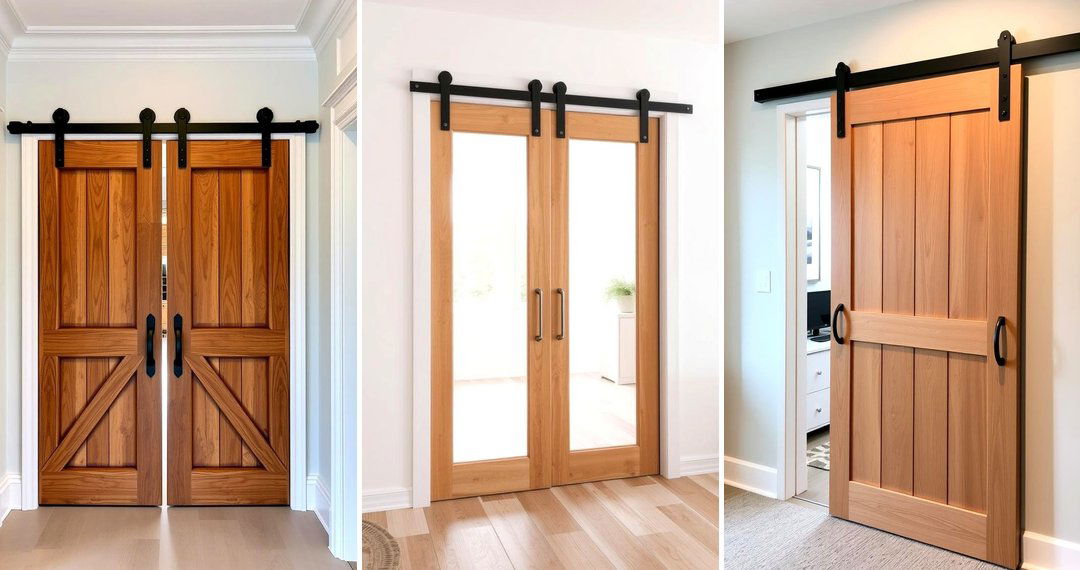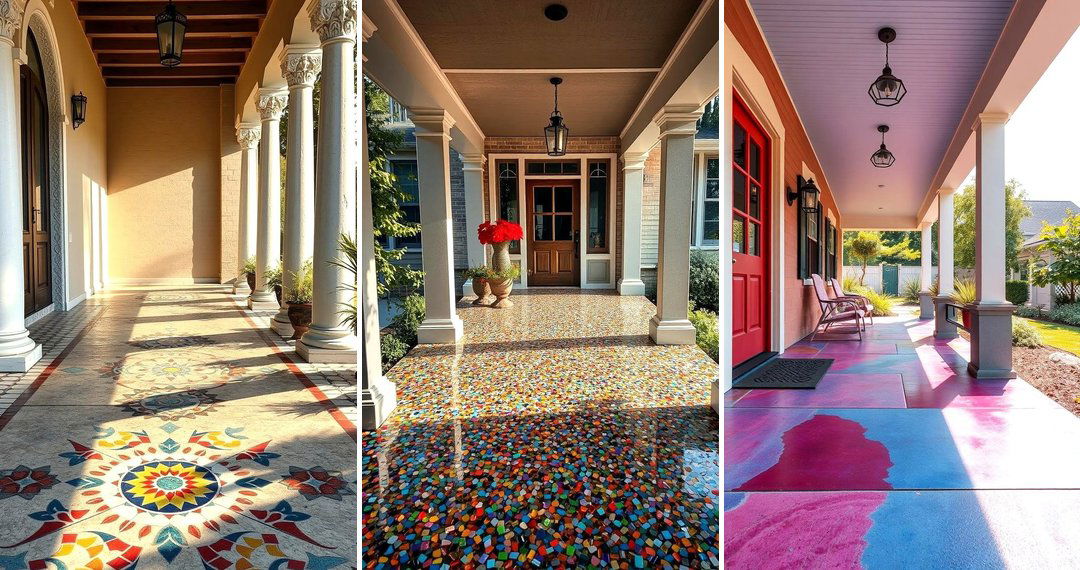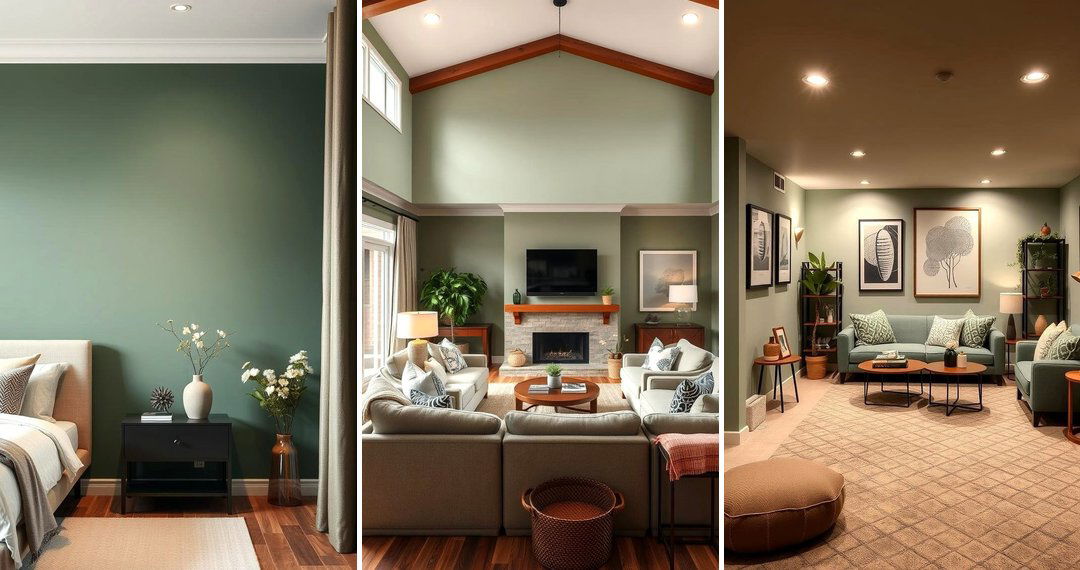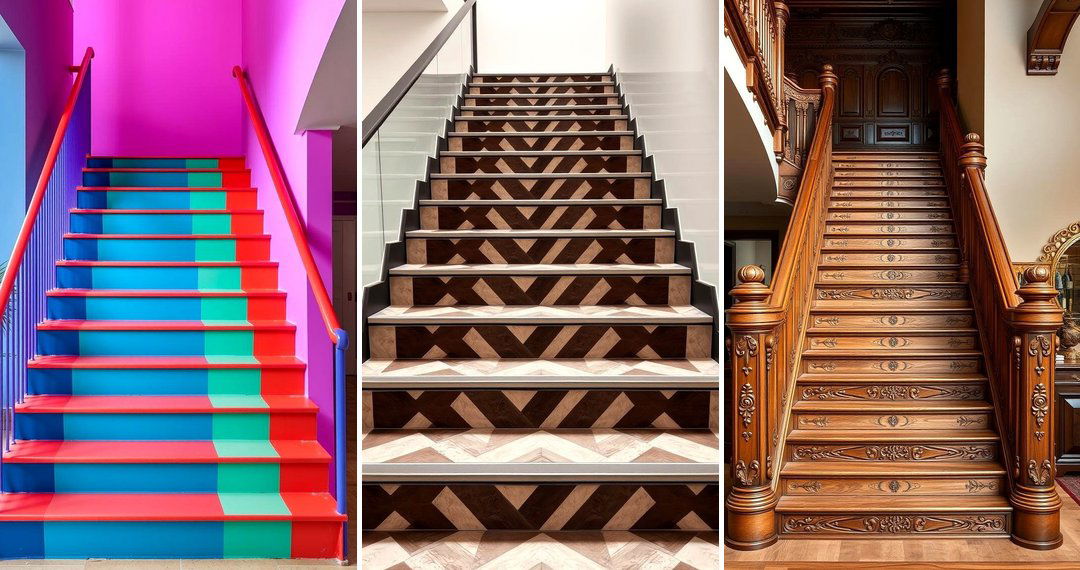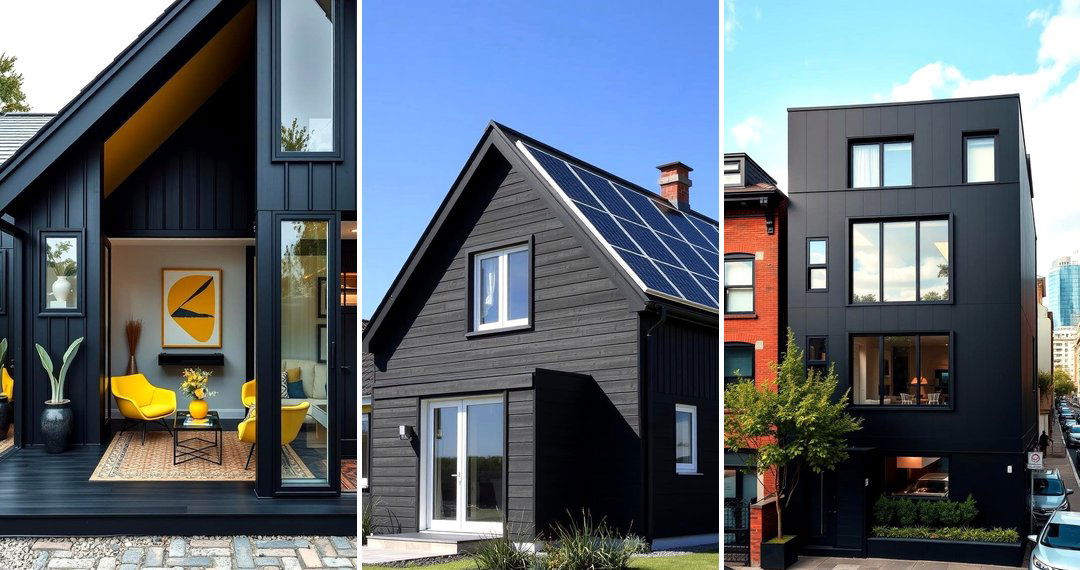Open floor plans are one of the most popular architectural choices for modern homes, providing an open and airy atmosphere that encourages social interaction and seamless movement throughout the space. This design concept breaks down walls between living, dining, and kitchen areas to create a cohesive, multi-functional space. The flexibility of open floor plans makes them ideal for families, couples, or individuals looking to design a space that suits their lifestyle needs. With thoughtful planning, you can transform your home into a functional, stylish sanctuary that fosters connection and creativity. Let's explore 24 open floor plan ideas that will help you design a home that meets your needs while enhancing its visual appeal and functionality.
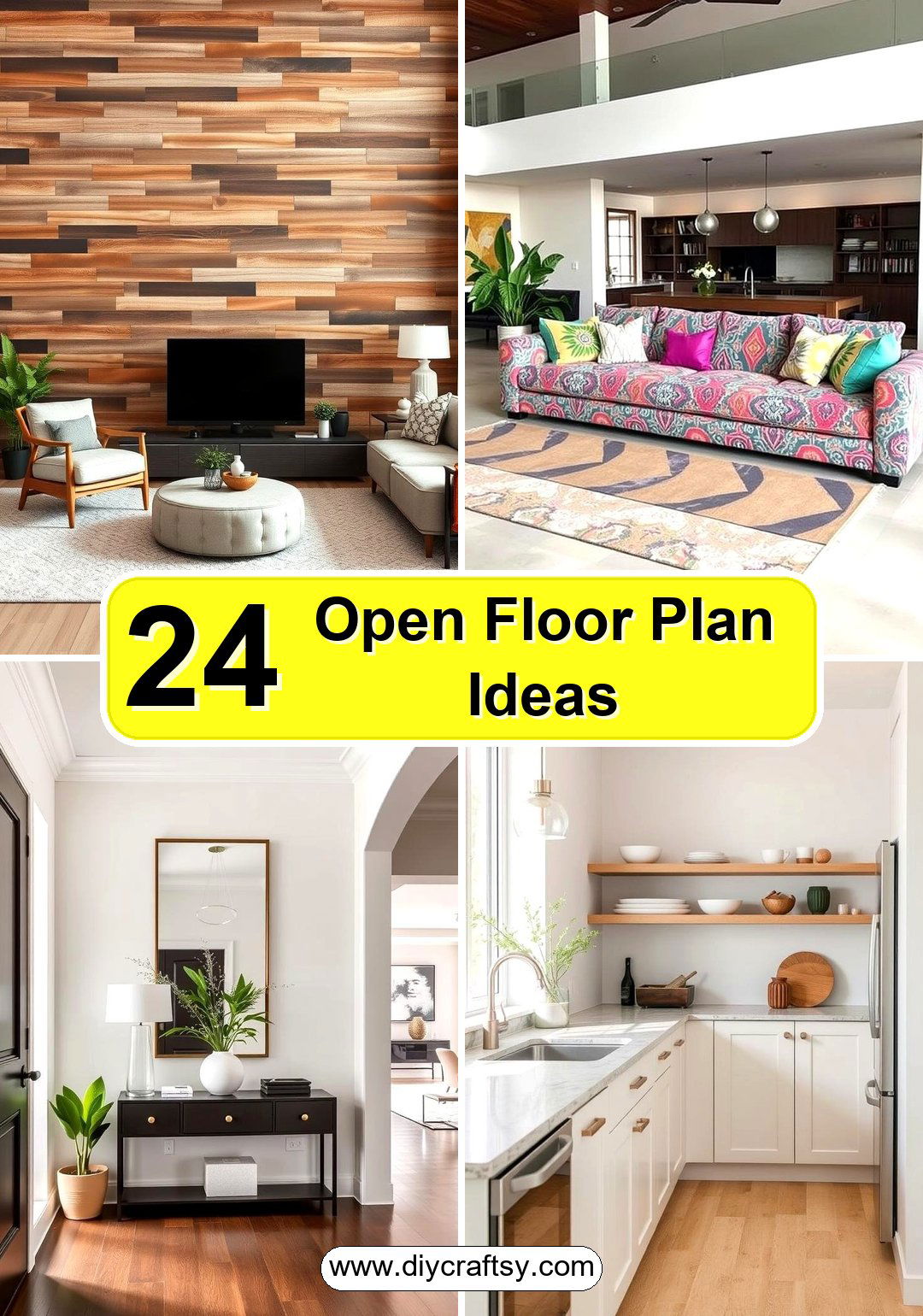
1. Maximizing Natural Light with Large Windows
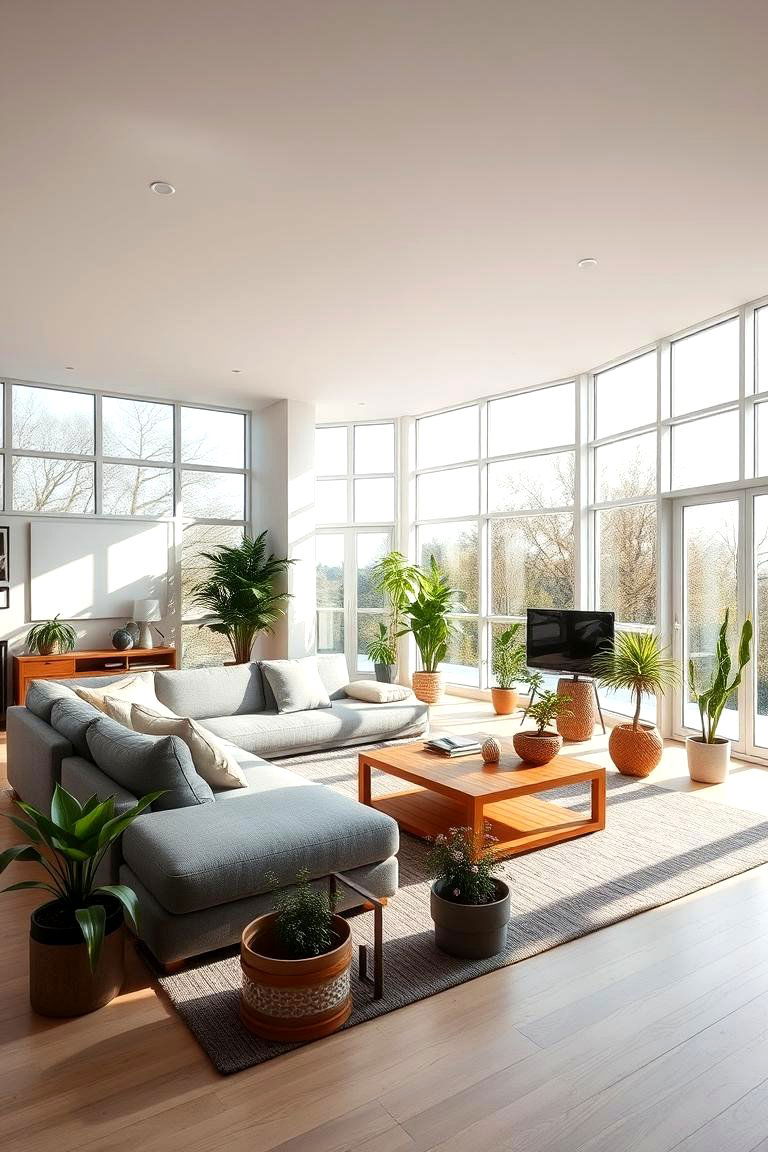
Open floor plans often feature expansive windows that allow natural light to flood the space. Large windows help create a bright, airy atmosphere that elevates the ambiance and can even improve mood and productivity. The addition of floor-to-ceiling windows is a popular choice for those wanting to connect the interior space with the outdoors, offering beautiful views while flooding the space with daylight. Whether you're enjoying the warmth of the sun in the winter or allowing fresh air to flow in during warmer months, maximizing natural light creates an inviting atmosphere that can make the entire home feel more expansive.
2. Defining Spaces with Furniture Layouts
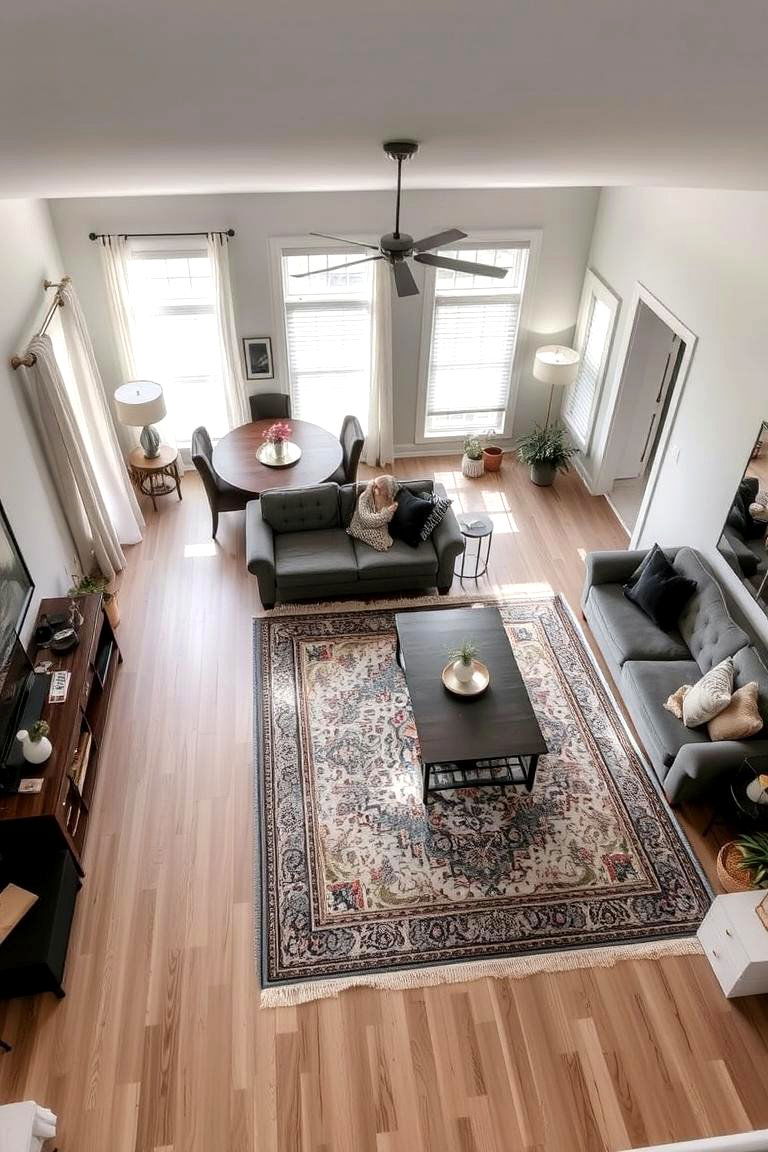
An open floor plan doesn't mean you have to sacrifice defining each space in your home. Strategic furniture layouts allow you to create distinct zones for various activities, such as a living room area, dining space, or reading nook. For example, a sectional sofa can act as a boundary between the living area and the kitchen, while a rug under the dining table helps delineate the dining space. Using furniture as dividers not only maintains the openness of the layout but also ensures that each area feels purposeful and organized. This approach also allows for flexibility, as you can easily rearrange the furniture if your needs change.
3. Incorporating Multi-Functional Furniture
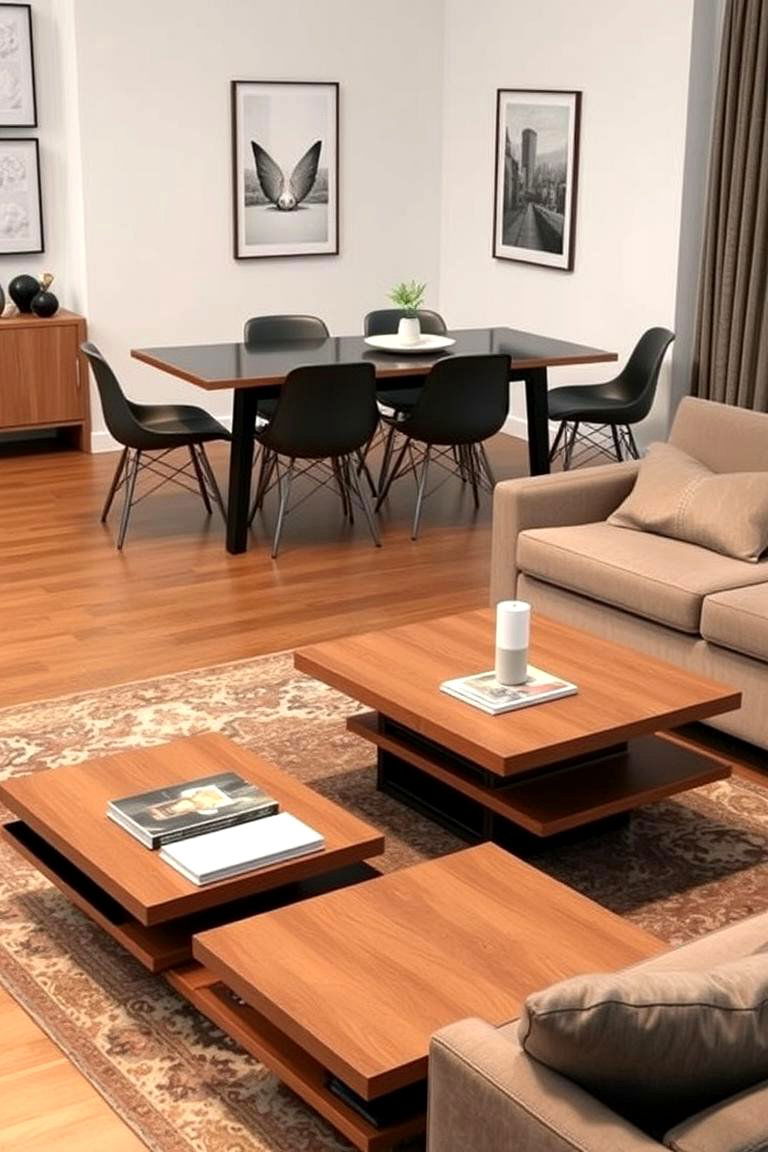
In an open floor plan, space is often at a premium, and multi-functional furniture pieces can be a game-changer. Consider investing in items such as fold-out dining tables, modular sofas, or coffee tables with hidden storage. These pieces maximize utility without sacrificing style. A sleeper sofa can provide extra sleeping space for guests, while an ottoman with built-in storage can keep clutter at bay. By integrating multi-functional furniture into your design, you make the most of every square foot, ensuring that the space remains flexible and adaptable to your needs.
4. Using Color Schemes to Create Flow
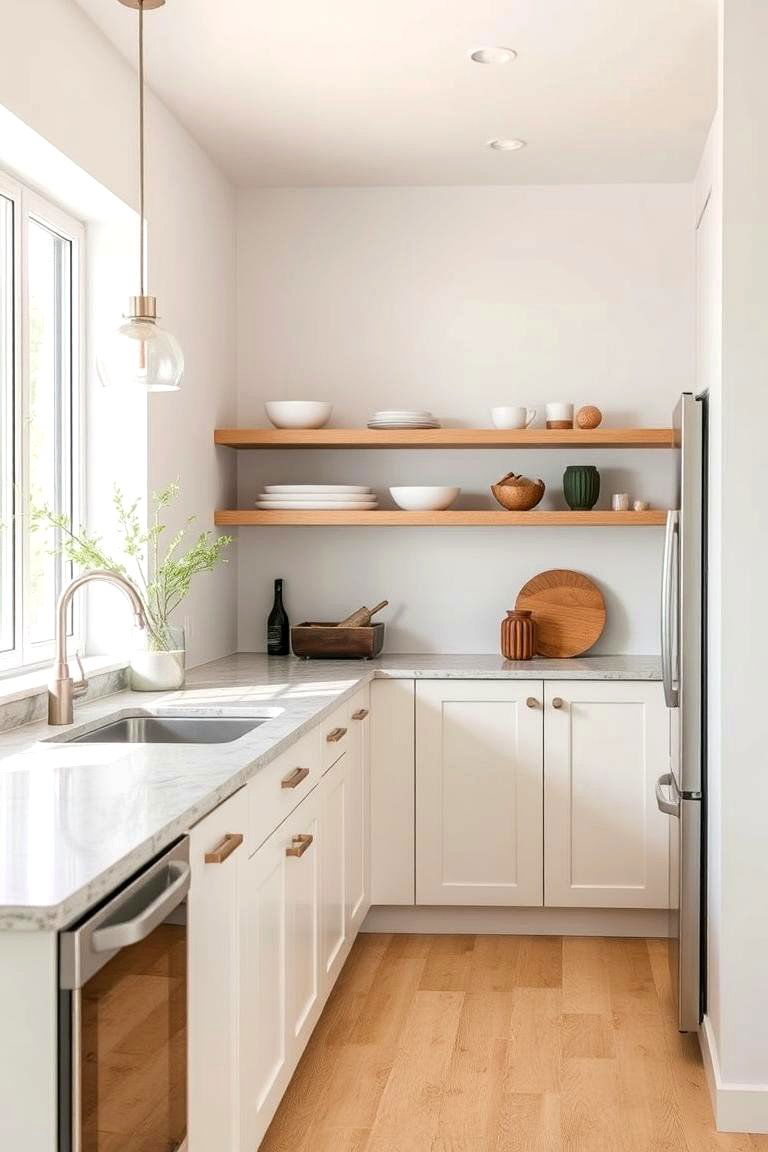
Color plays a crucial role in an open floor plan as it sets the tone for the entire space. Choosing a cohesive color palette for your walls, furniture, and decor helps create a sense of unity and flow. Lighter tones like whites, creams, or light grays are often used to enhance the sense of openness and airiness, while accent colors can be incorporated through accessories like cushions, artwork, or rugs. A harmonious color scheme helps visually link the different areas within the open space while allowing each section to feel like part of the whole design.
5. Adding a Kitchen Island for Function and Style
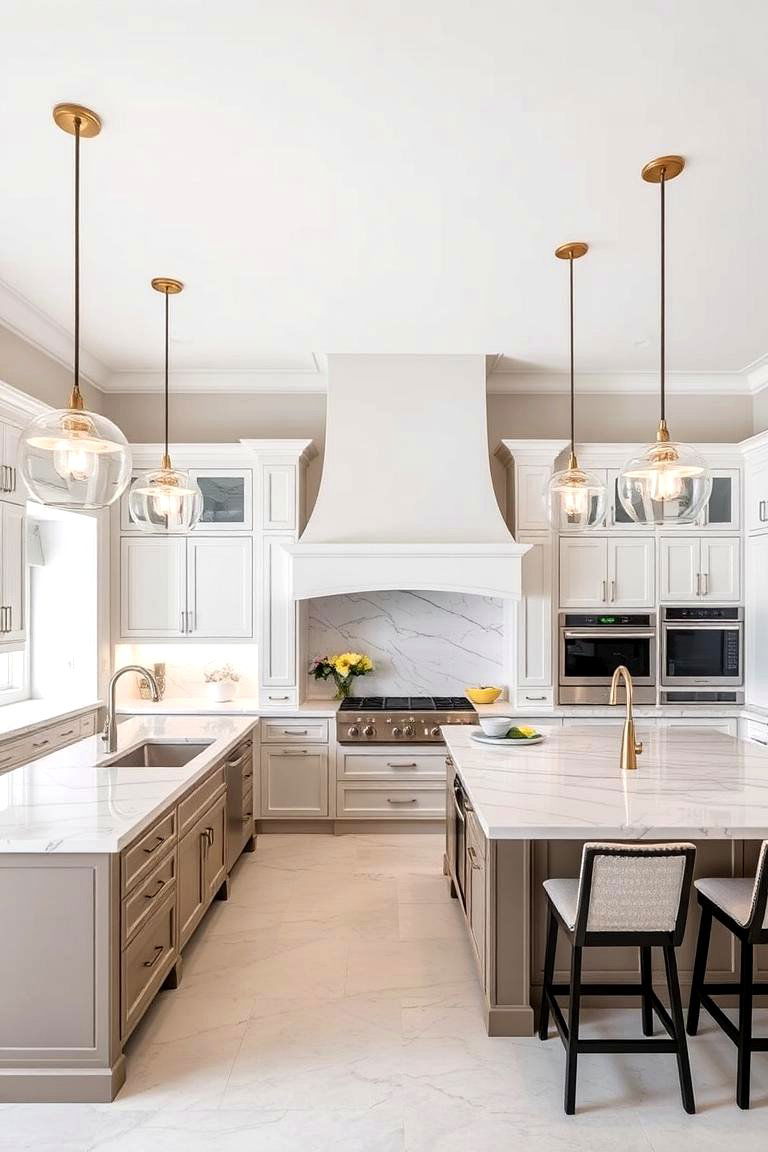
A kitchen island is a functional and stylish addition to an open floor plan, providing additional workspace, seating, and storage. Not only does it act as a hub for meal preparation, but it also serves as a social area where family and guests can gather. Adding bar stools around the island creates a casual dining space and encourages interaction between the kitchen and living areas. Whether you're cooking, entertaining, or simply enjoying a cup of coffee, a kitchen island seamlessly blends with the surrounding space while offering practical benefits.
6. Open Shelving for an Airy and Accessible Kitchen
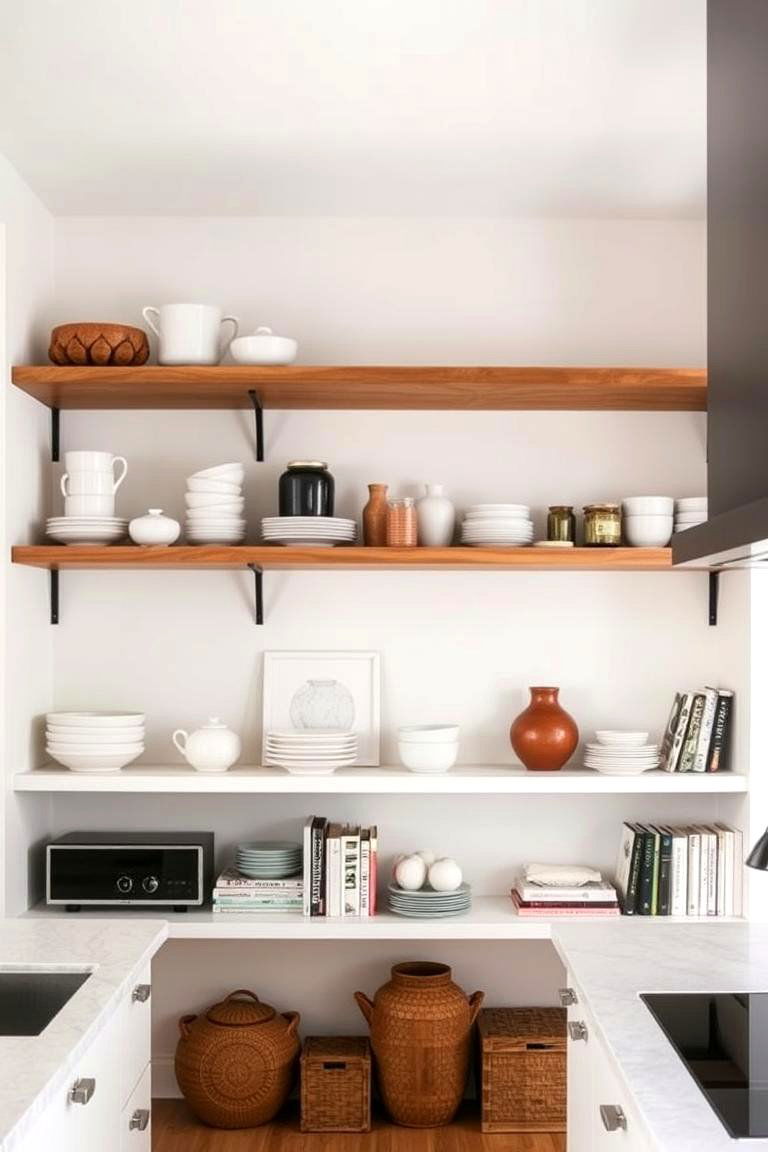
In an open floor plan, where visual accessibility is key, open shelving in the kitchen can enhance the feeling of openness and make everyday items easily accessible. Floating shelves allow you to display your favorite dishes, cookbooks, or decorative objects while keeping everything within arm’s reach. Open shelving eliminates the need for bulky cabinets and provides a clean, minimalist look. However, it’s important to keep items organized and aesthetically pleasing to avoid a cluttered appearance. Open shelving is a perfect choice for those looking to combine function and style while maintaining an airy atmosphere.
7. Creating a Seamless Transition Between Indoors and Outdoors
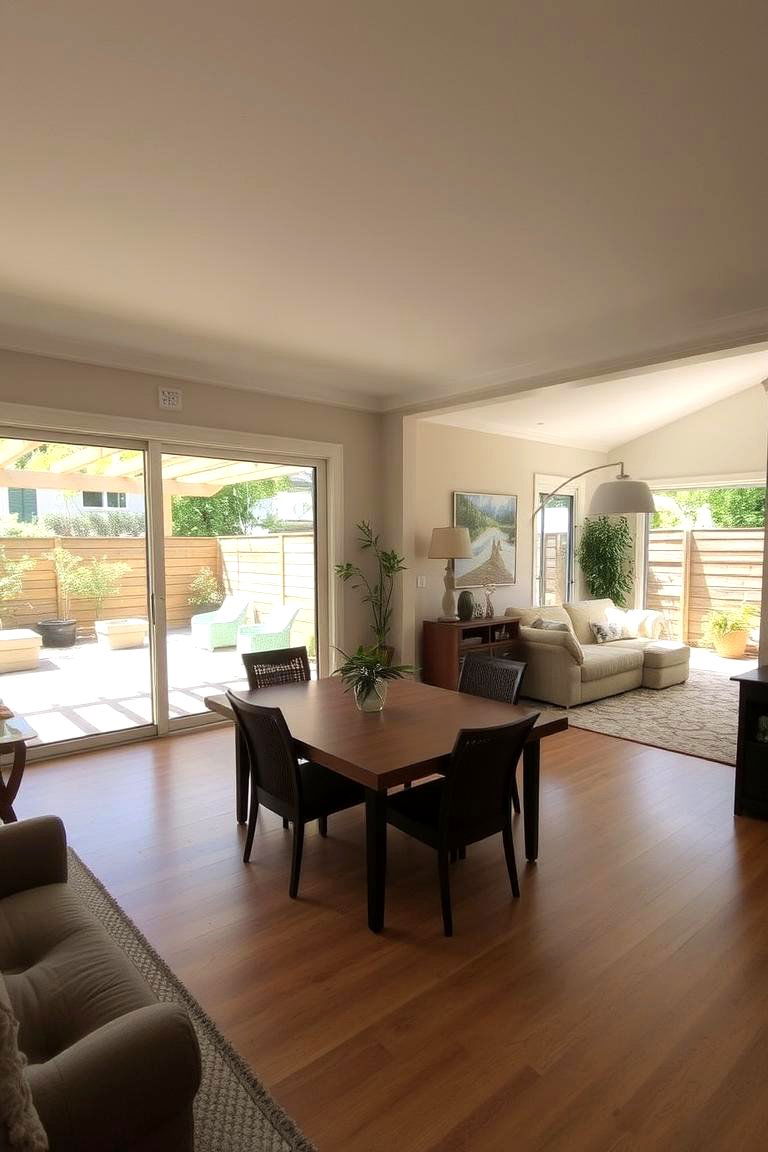
Integrating your open floor plan with the outdoor space is a great way to enhance the feeling of openness and expand your living area. Large sliding or folding doors can create a seamless transition from the interior to a patio, deck, or garden. These doors allow fresh air to flow through the space, making it feel as though the outdoors are an extension of your home. Adding outdoor furniture or a fire pit creates an inviting atmosphere where you can entertain guests or relax. This connection between indoors and outdoors improves the overall flow and enhances the home's livability.
8. Blending Modern and Traditional Elements
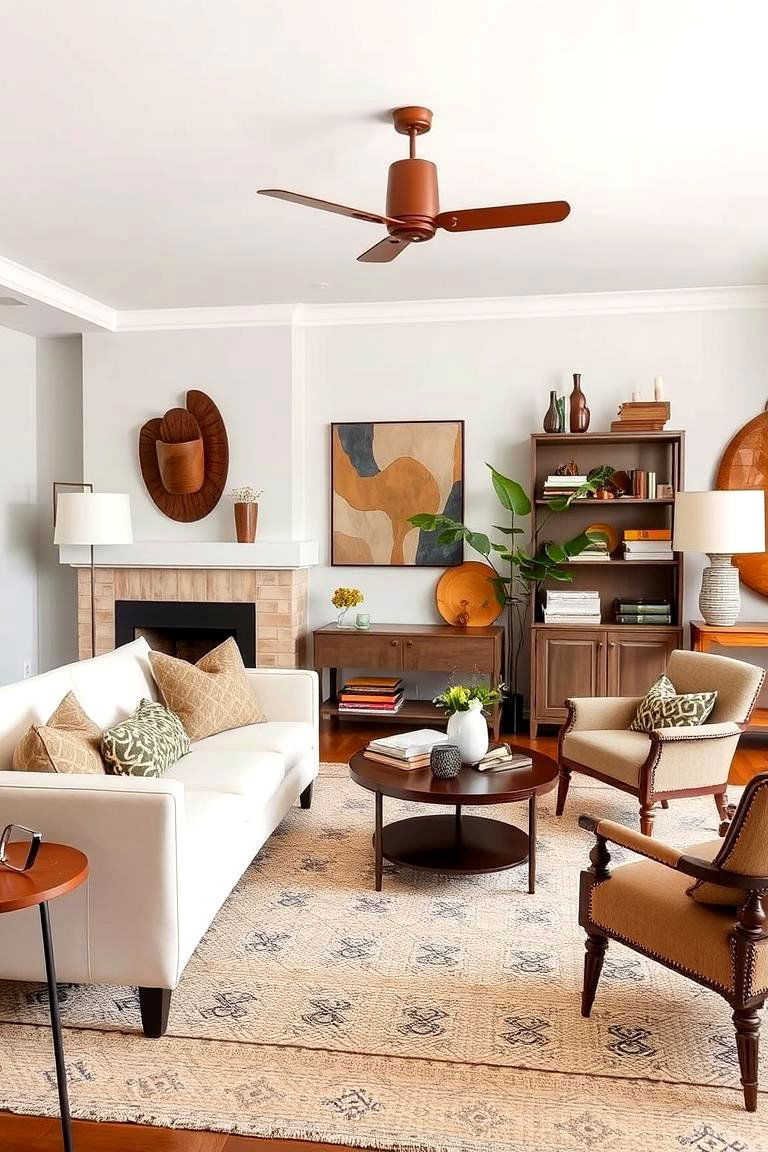
Combining modern and traditional design elements can give your open floor plan a timeless appeal. For example, a contemporary sofa can be paired with vintage or antique furniture pieces for a look that feels both fresh and classic. Similarly, industrial-style light fixtures can be used alongside soft, natural textures like wooden floors or plush cushions to create a balanced contrast. This blending of styles adds depth and interest to the space, making it feel more personalized while maintaining a cohesive overall design.
9. Using Textures to Add Warmth
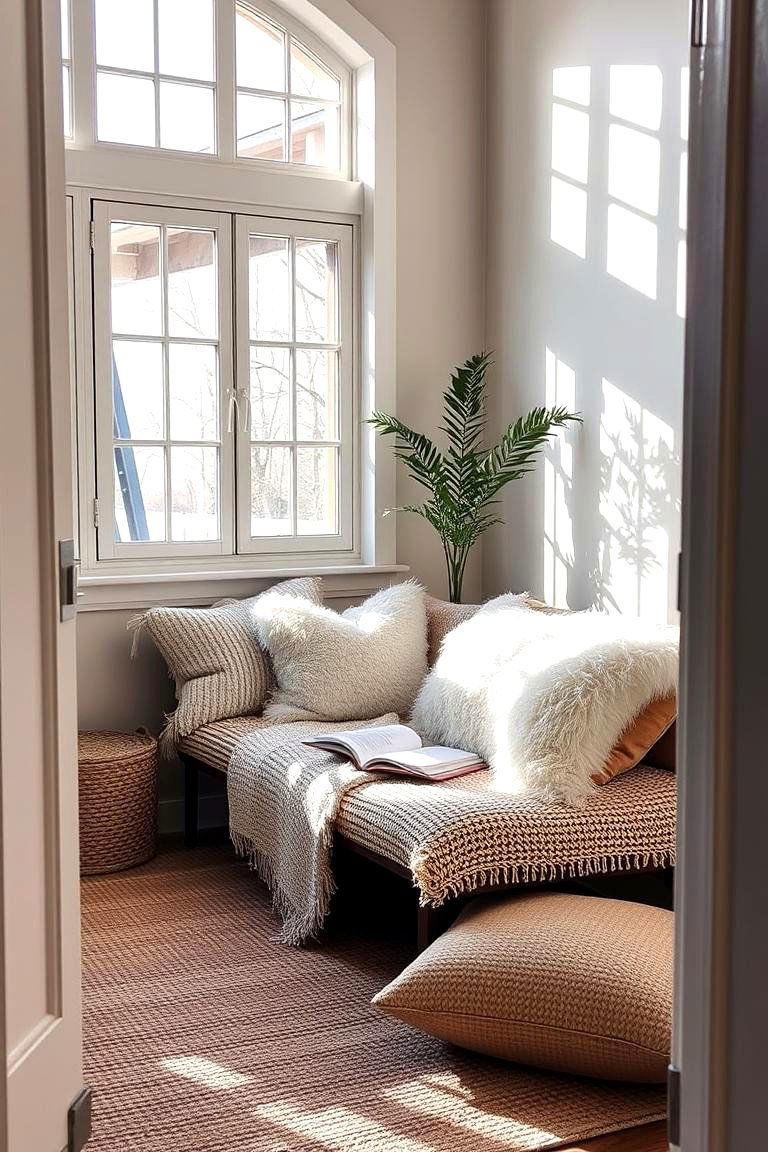
In an open floor plan, where large spaces may otherwise feel cold, textures play a key role in adding warmth and comfort. Layering different textures—such as plush rugs, soft throws, woven baskets, and tactile wall finishes—can help make the space feel inviting. Consider using natural materials like wood, stone, or linen to add an organic touch. Incorporating a variety of textures helps soften the otherwise open and airy atmosphere, making it feel more welcoming and homely while enhancing the design’s visual appeal.
10. Keeping Sightlines Clean and Uncluttered
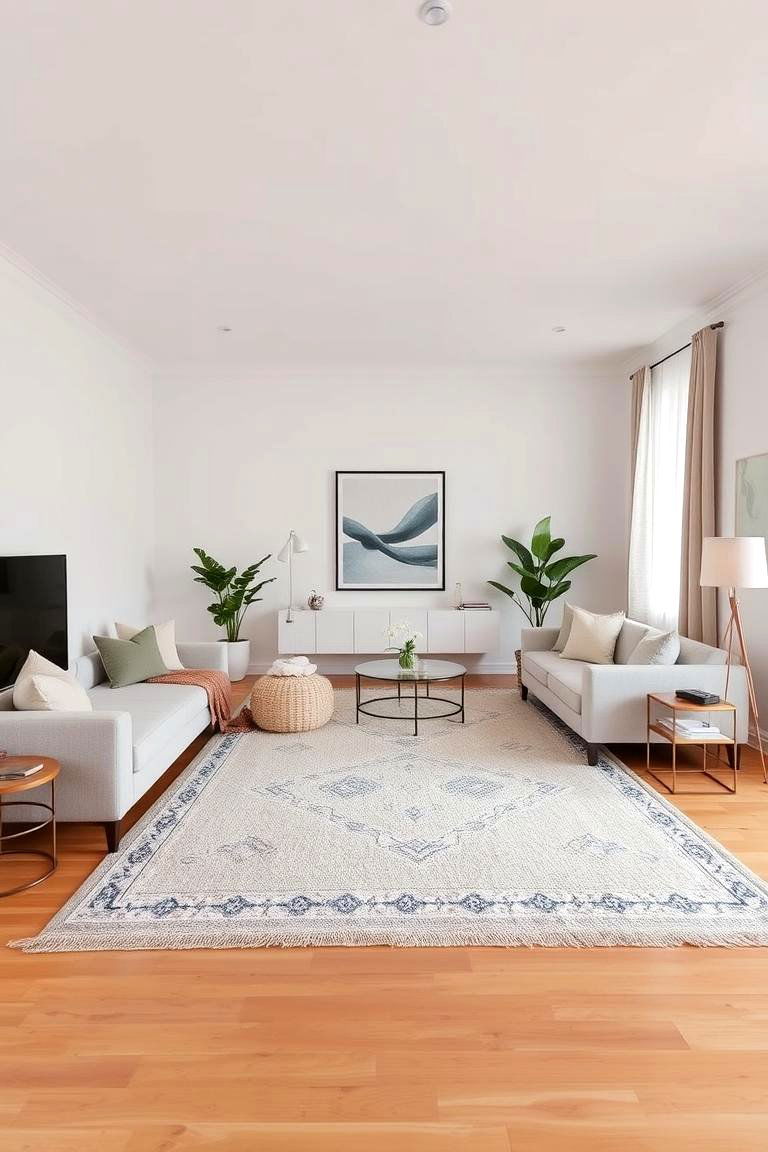
One of the key challenges of an open floor plan is maintaining clear sightlines that aren't obstructed by clutter. To achieve this, focus on a minimalist approach by keeping surfaces clean and organized. Use storage solutions that help reduce visual clutter, such as built-in cabinets or hidden shelving. A tidy space with unobstructed sightlines allows the open floor plan to feel more expansive and organized. Decluttering regularly ensures that the space remains functional and aesthetically pleasing, contributing to the overall tranquility of your home.
11. Using Sliding Doors to Create Flexible Spaces
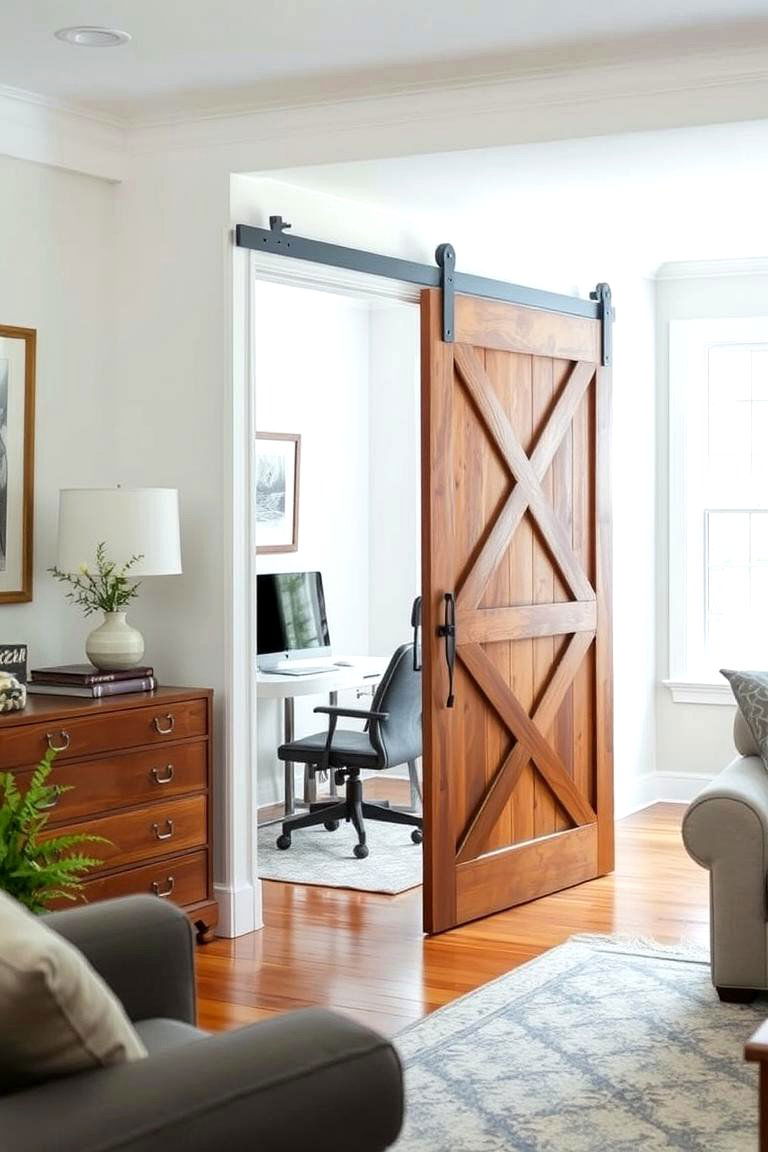
Sliding doors can be a great way to create flexible spaces within an open floor plan. By adding sliding doors to areas like home offices, bedrooms, or even bathrooms, you can easily open up or close off sections of the space depending on your needs. This allows for a sense of privacy when necessary while preserving the overall openness of the design. Sliding doors can also be a stylish design element, with options like barn doors, glass panels, or even frosted designs offering both function and aesthetic appeal.
12. Incorporating a Statement Ceiling
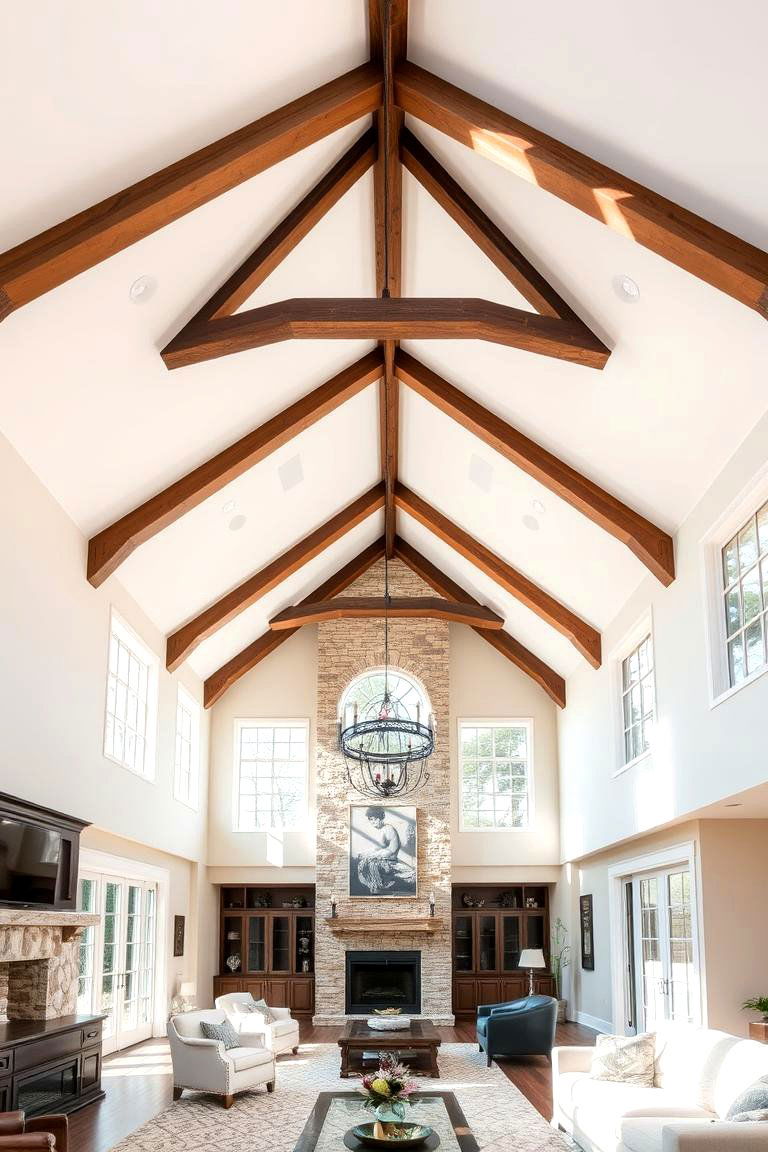
The ceiling is often overlooked in open floor plan designs, but it can be a focal point that adds visual interest. Consider incorporating a statement ceiling to elevate the space, whether it's through exposed beams, a vaulted ceiling, or a bold paint color. A statement ceiling draws the eye upward, adding a sense of grandeur and making the space feel more expansive. Whether you go for a rustic look with wooden beams or a modern aesthetic with sleek, white lines, a statement ceiling can transform the entire room.
13. Adding a Feature Wall for Visual Interest

In an open floor plan, a feature wall can help break up the space and add a touch of personality. Consider adding a textured wall using materials like reclaimed wood, stone, or even wallpaper with bold patterns. A feature wall can serve as the focal point of the room, drawing attention to a specific area, such as the living room or dining area. It’s a simple yet effective way to introduce a unique design element without overwhelming the space, creating visual interest that enhances the overall aesthetic of the home.
14. Designing with Open Space in Mind
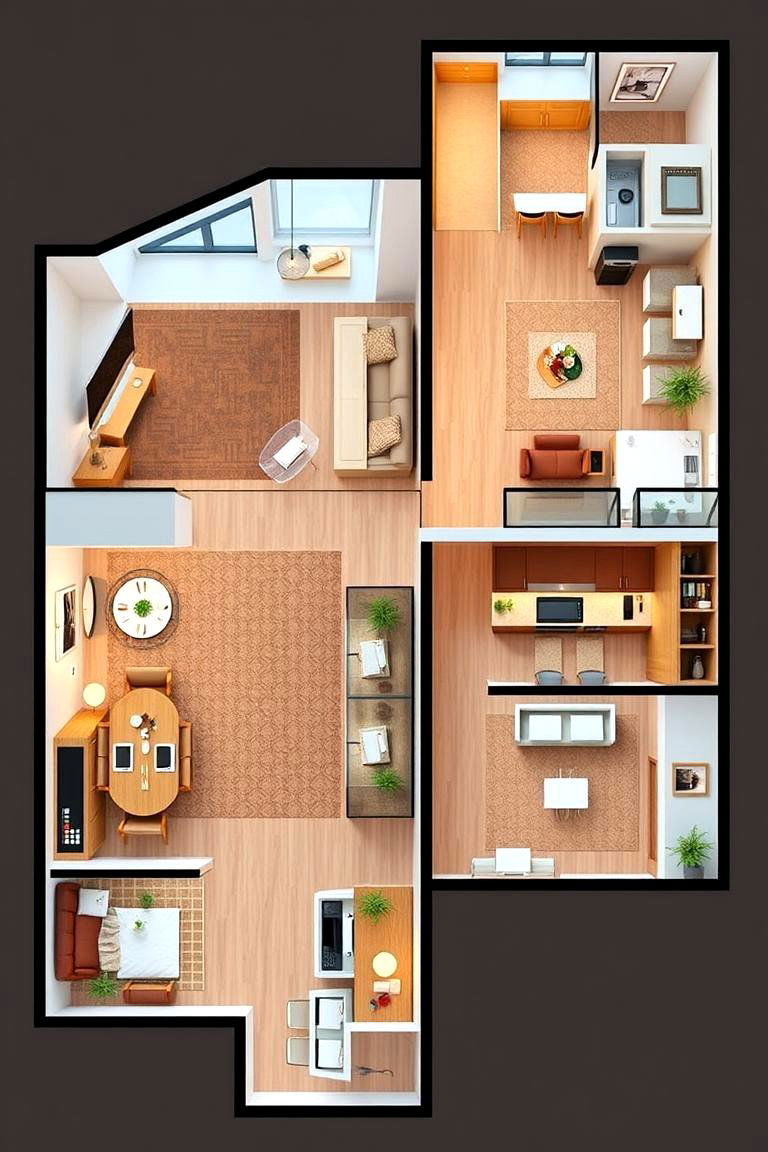
When designing an open floor plan, it’s essential to consider how each space will flow into the next. Think about how you want to use the space and how one area transitions into the next. For example, the living room can flow seamlessly into the dining area with a continuous flow of flooring materials or furniture styles. Keeping the design open and unobstructed ensures that there’s a natural flow, making the space feel connected and cohesive. When planning your design, keep functionality and ease of movement at the forefront.
15. Enhancing the Entryway
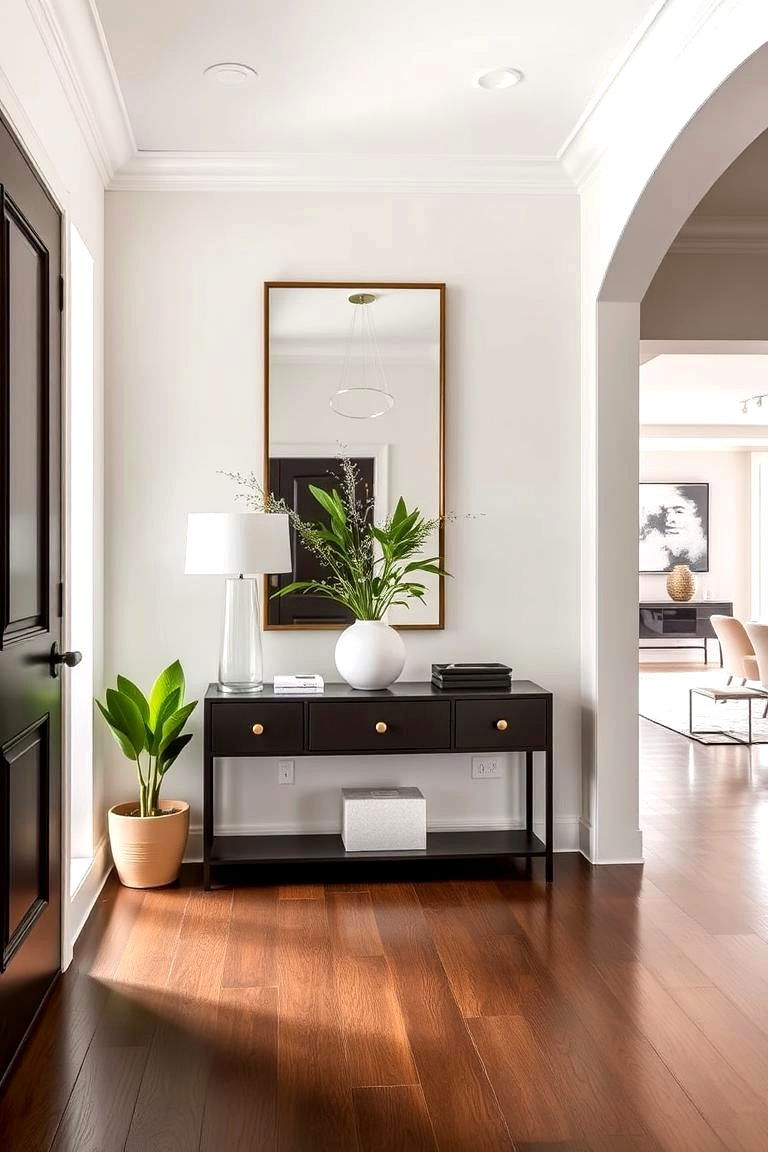
The entryway in an open floor plan is the first impression guests have of your home, and it sets the tone for the rest of the space. To enhance the entryway, consider adding decorative elements like a statement mirror, a piece of art, or a sleek console table. A well-designed entryway can lead seamlessly into the main open space, establishing a welcoming atmosphere right from the start. Use lighting to create a warm ambiance and emphasize the flow into the next area, ensuring a smooth transition.
16. Layering Lighting for Different Moods
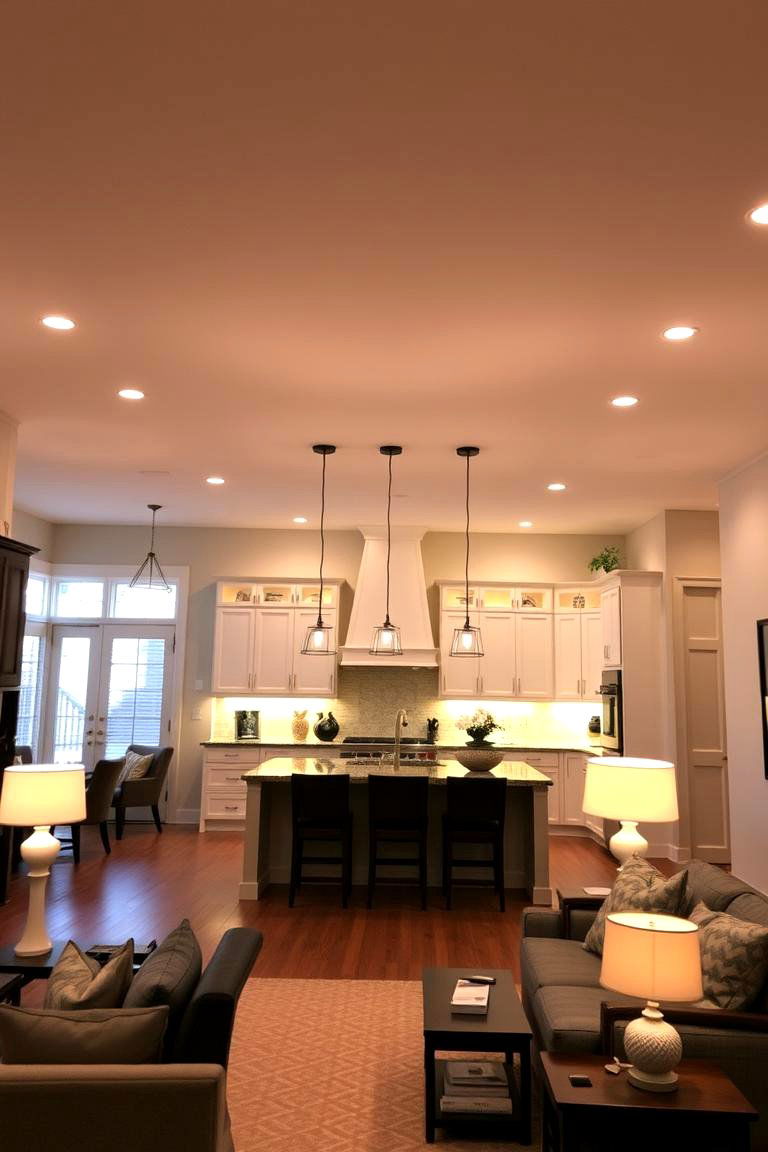
Lighting is one of the most important aspects of an open floor plan, as it influences the overall ambiance of the space. To create a warm, inviting atmosphere, layer different types of lighting throughout the room, such as overhead lights, table lamps, and task lighting. Dimmers and adjustable fixtures allow you to set the mood for various activities, whether you’re hosting a dinner party or curling up with a book. Proper lighting design is key to highlighting architectural features, adding visual interest, and ensuring the space is both functional and beautiful.
17. Choosing Statement Furniture Pieces
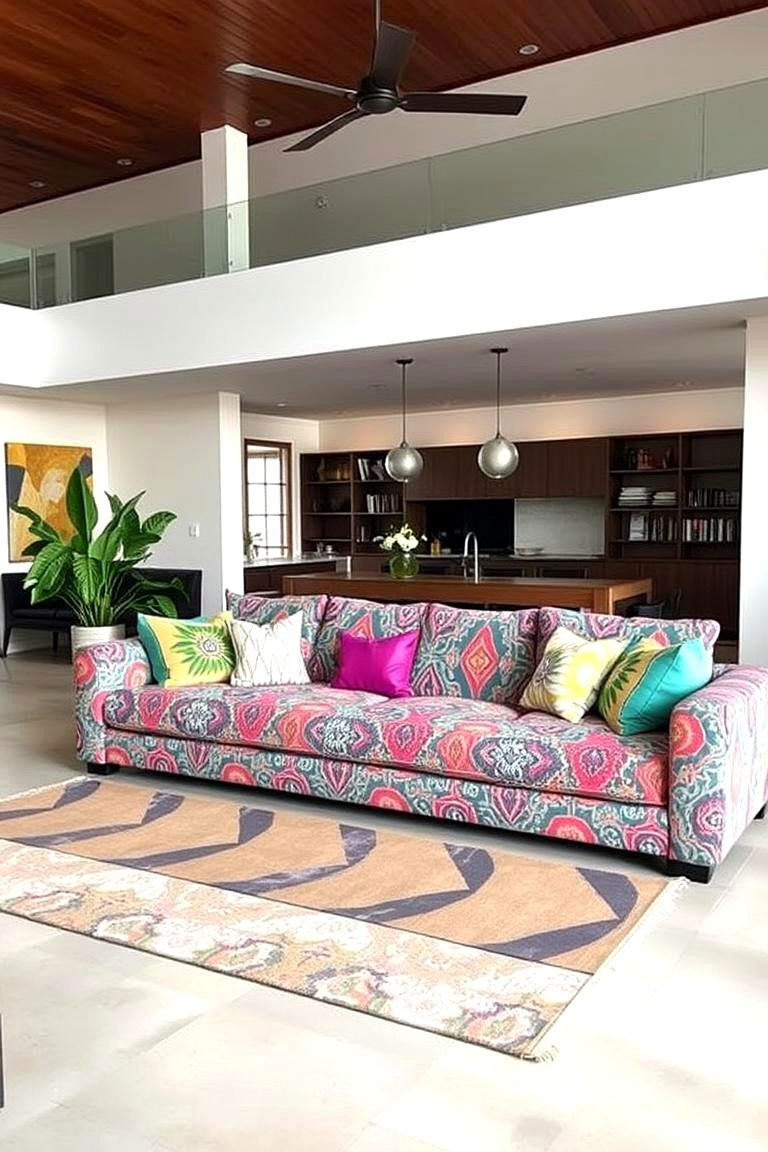
In an open floor plan, statement furniture pieces can add personality and serve as focal points for the space. Opt for a bold, colorful sofa or an oversized armchair that stands out in the living area. Statement pieces can also be incorporated through unique coffee tables, eye-catching lighting fixtures, or sculptural side tables. These pieces add individuality to the room, making it feel more dynamic and reflective of your personal style while remaining cohesive within the open layout.
18. Incorporating Greenery for Freshness
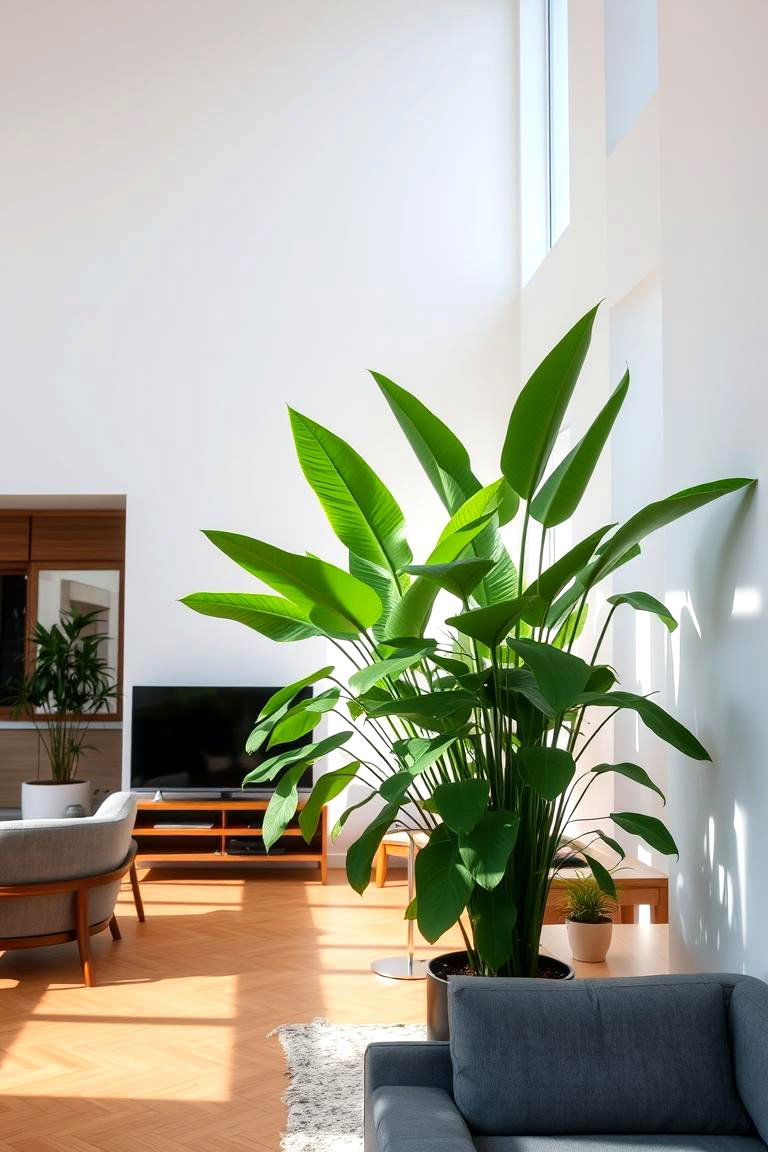
Indoor plants are a great way to bring life and vibrancy to an open floor plan. Whether placed in large planters or as smaller tabletop plants, greenery adds freshness and helps purify the air. Incorporating a variety of plant types, from low-maintenance succulents to tall indoor trees, can complement your design while creating a calming environment. Greenery adds a natural element that softens the space and makes it feel more connected to the outdoors.
19. Embracing Minimalism for Clarity
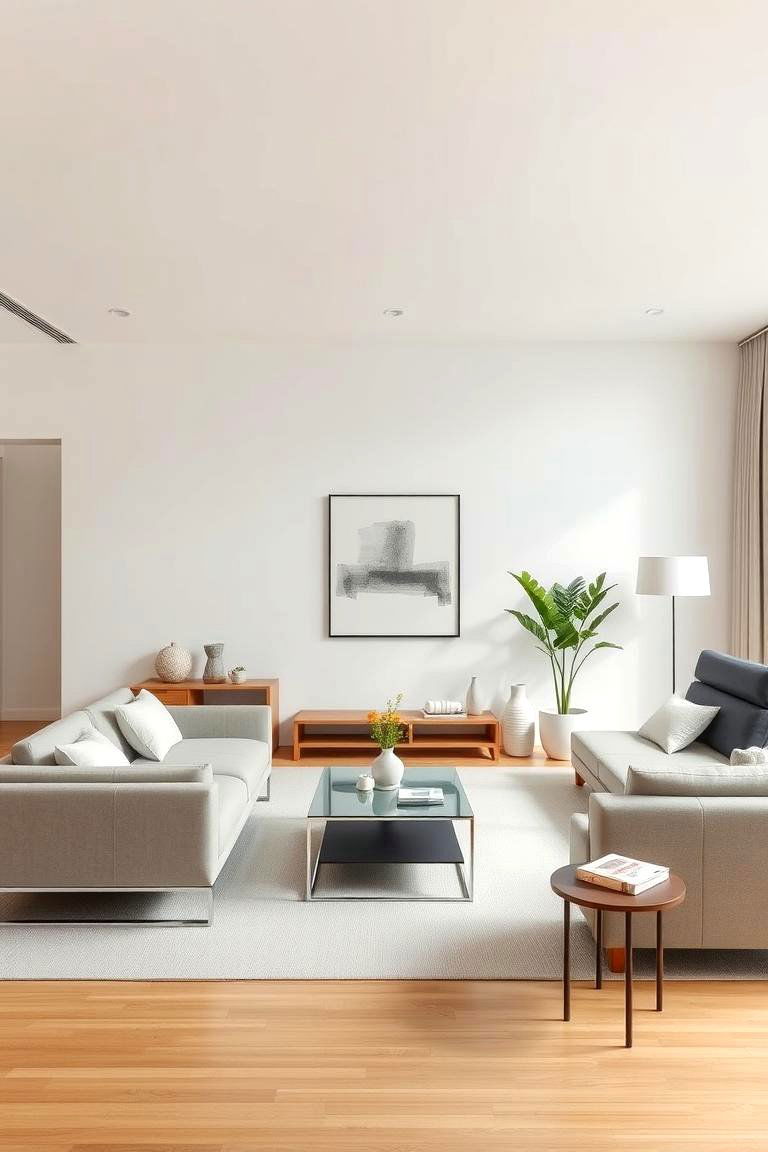
In an open floor plan, minimalism can help create a serene and organized environment. Keep surfaces clean and free of clutter by choosing only essential furniture pieces and decor. Opt for streamlined designs and neutral colors that create a sense of calm and clarity. Minimalism allows the space to breathe and feel open, helping to maintain a peaceful, clutter-free atmosphere. The beauty of minimalism lies in its simplicity, where every item serves a purpose while contributing to the overall tranquility of the home.
20. Adding Vertical Storage Solutions
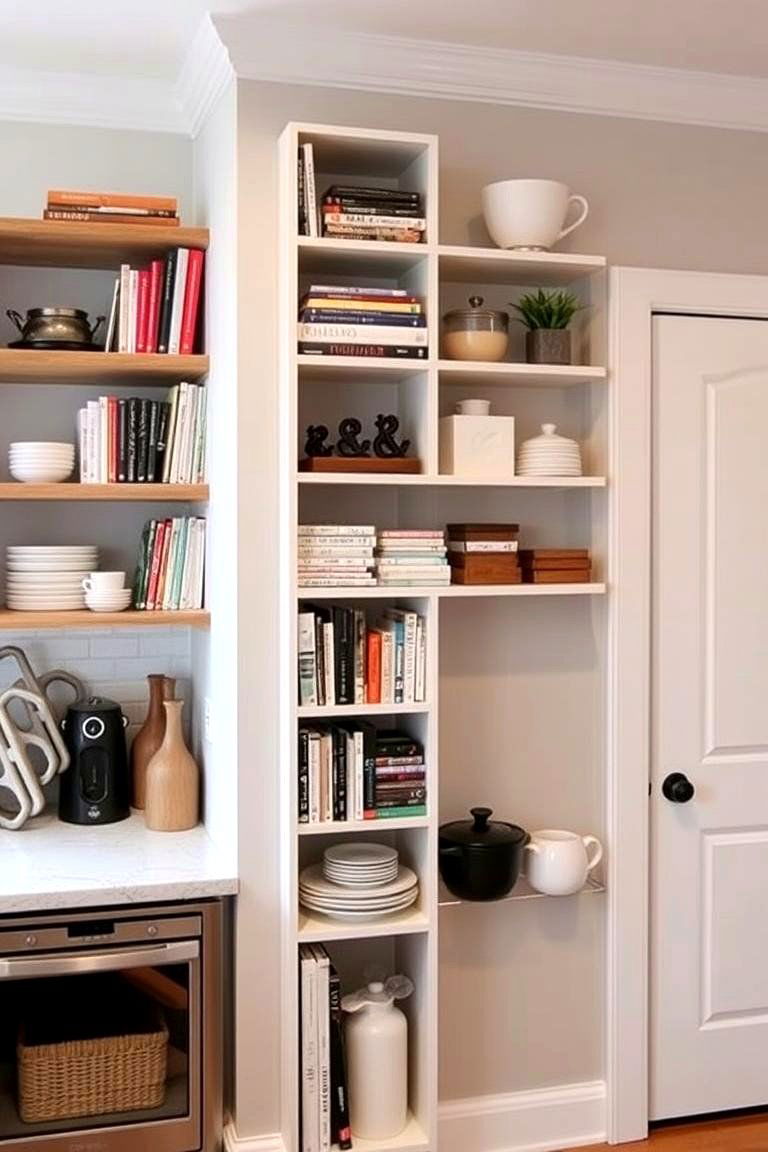
In an open floor plan, it’s important to utilize vertical space for storage. Shelving units or built-in cabinets that reach the ceiling can help maximize storage without taking up precious floor space. Vertical storage allows you to keep the space organized while preserving its openness. Consider incorporating floating shelves or high cabinetry in the kitchen, living room, or hallway to store books, decorative items, or kitchen essentials. Vertical storage solutions help ensure that every inch of your home is functional and free from clutter.
21. Integrating Smart Technology
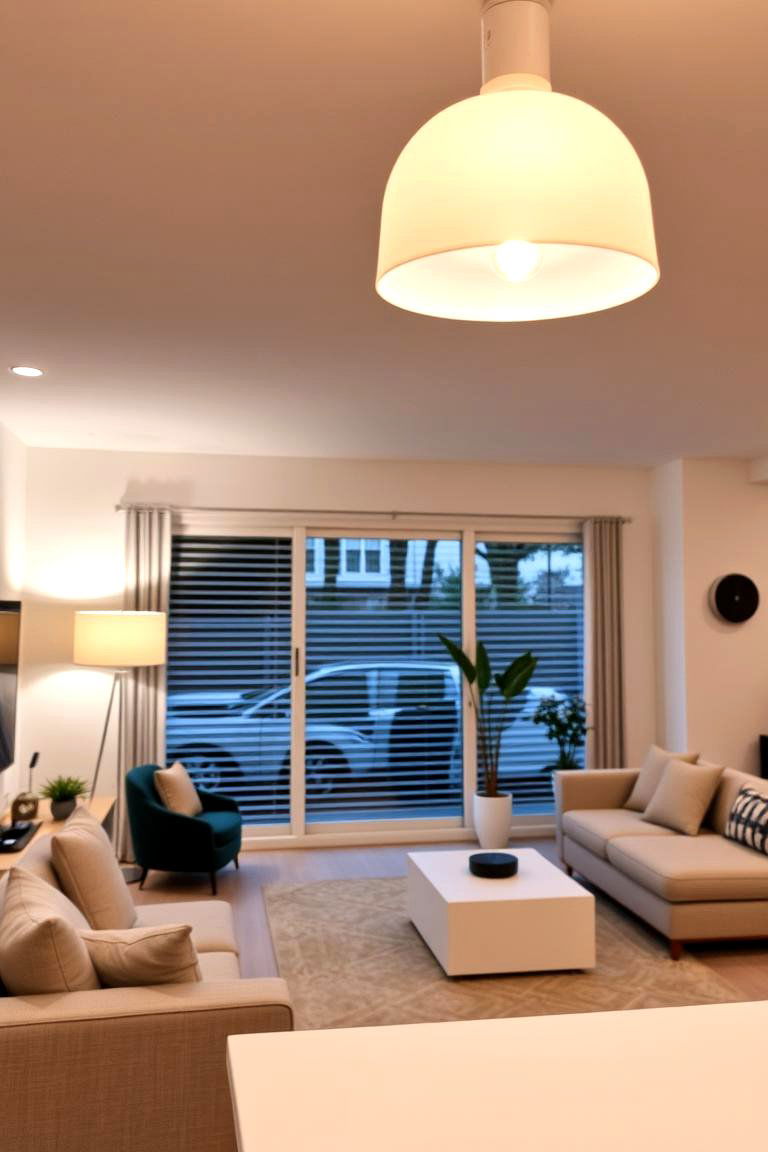
Smart home technology can enhance the functionality of an open floor plan by making it more efficient and convenient. Automated lighting, voice-activated assistants, and smart thermostats allow you to control the ambiance and temperature without having to move through the space. Adding smart technology creates a seamless living experience where everything works together in harmony. These tech innovations contribute to a modern, futuristic feel, while also improving energy efficiency and ease of use.
22. Designing for Entertaining
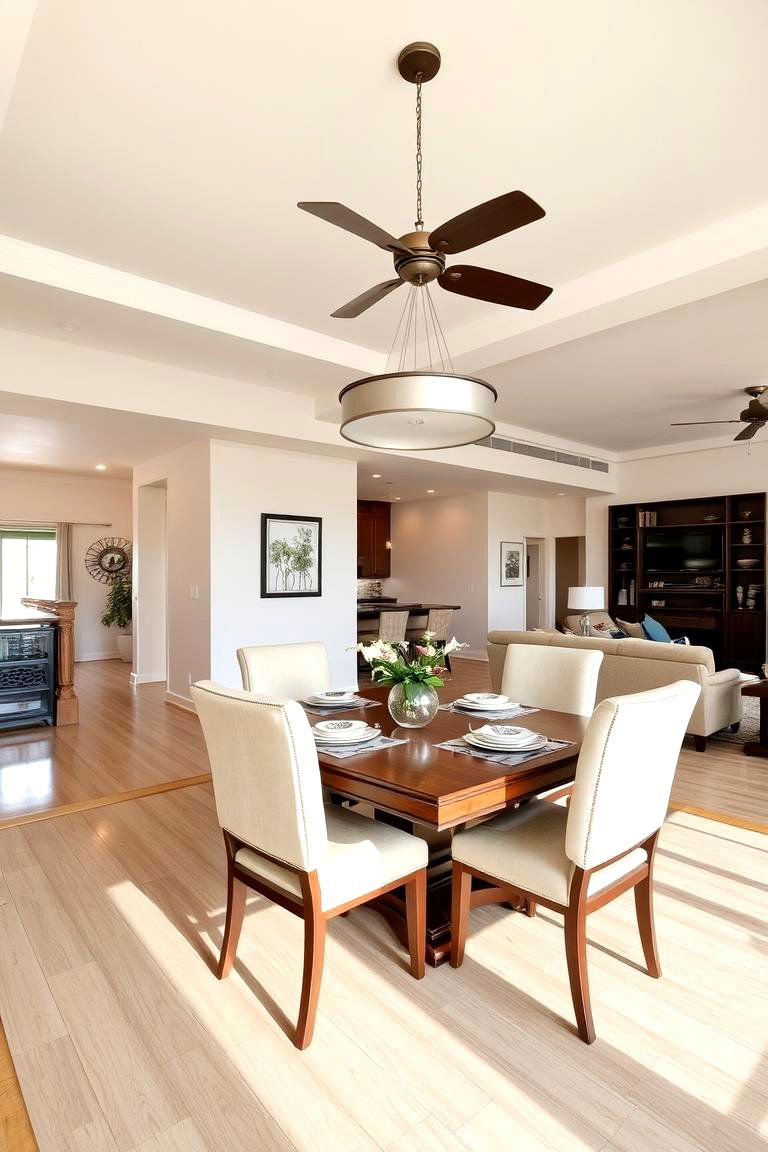
Open floor plans are perfect for entertaining, as they provide ample space for guests to gather and interact. Consider designing your open plan with entertaining in mind by incorporating a large dining table, bar area, or extra seating around the kitchen island. A spacious layout allows guests to move freely between areas, ensuring that everyone feels comfortable and included. Whether hosting casual get-togethers or formal dinner parties, an open floor plan makes entertaining easier and more enjoyable.
23. Using Bold Art Pieces as Focal Points
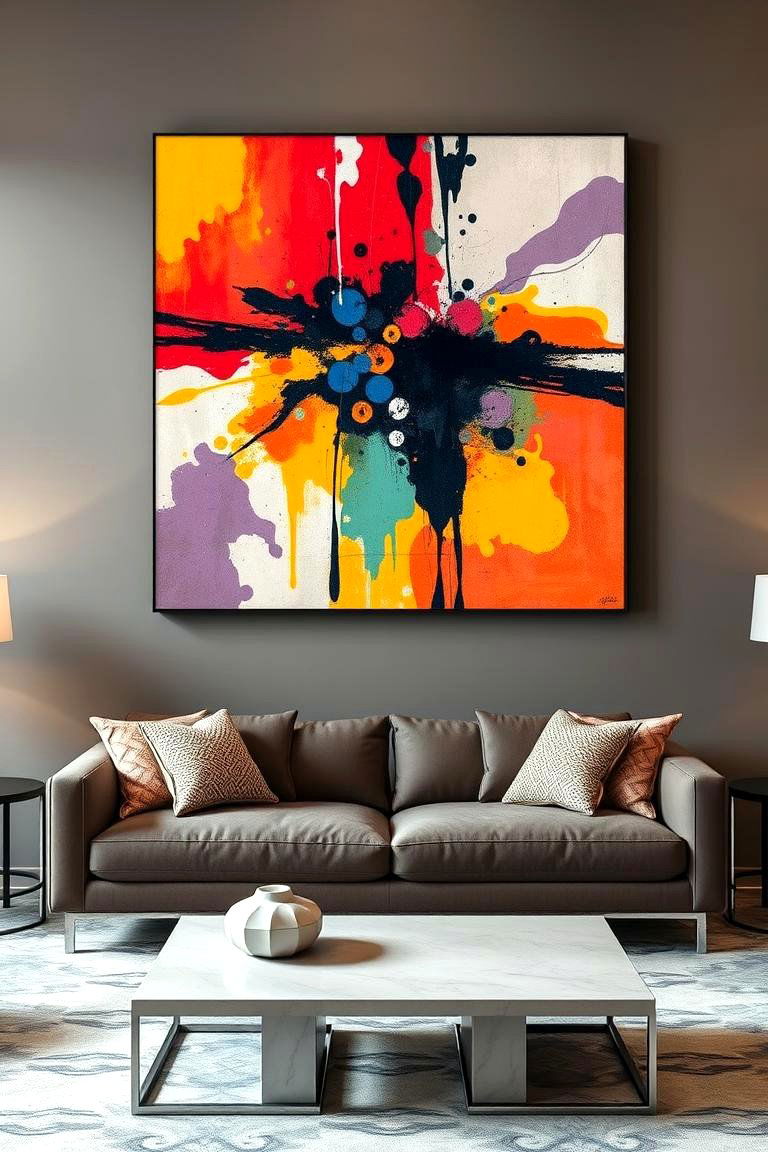
In an open floor plan, large-scale art pieces can serve as striking focal points that draw the eye and create visual interest. Whether it’s a colorful painting above the couch or a sculptural piece on the wall, bold art pieces help define different zones within the space. Choose artwork that resonates with your personal style while complementing the overall design. Art adds personality and can elevate the entire aesthetic, creating a space that feels uniquely yours.
24. Mixing Textures and Materials for Depth
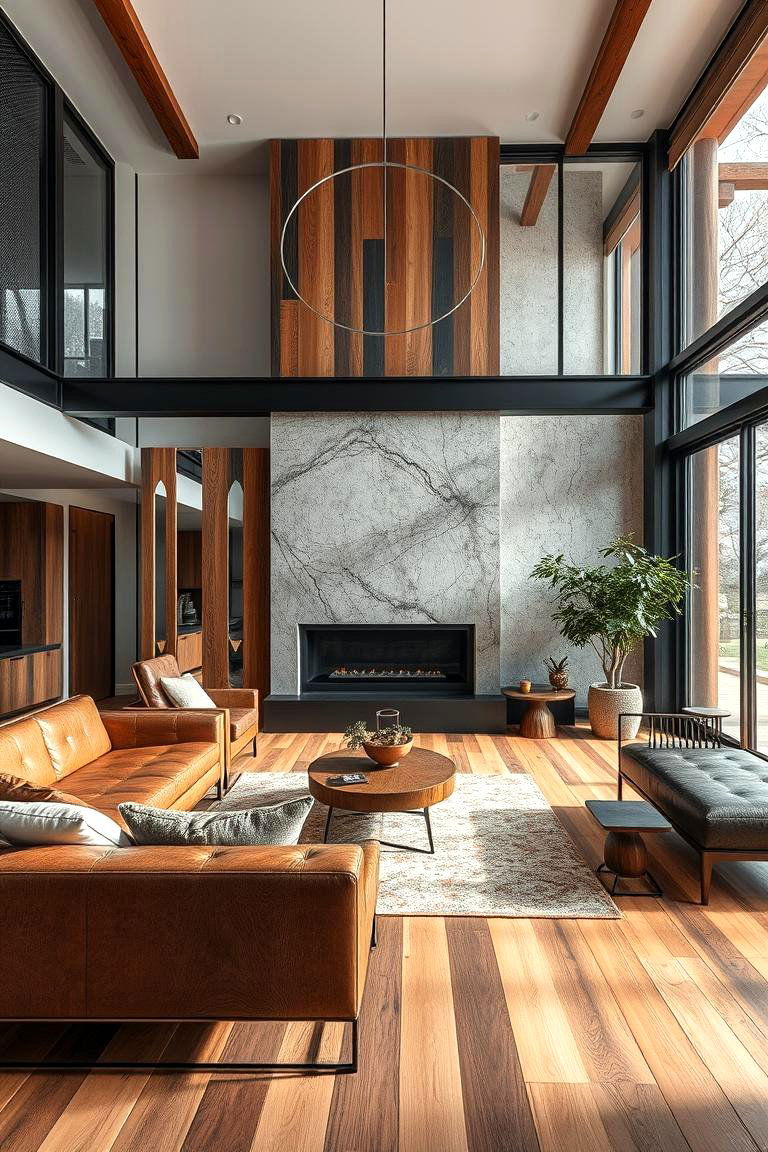
An open floor plan can benefit from mixing different textures and materials to create visual interest and depth. Incorporating a mix of wood, metal, glass, and fabric adds layers of texture that make the space feel dynamic and rich. For example, pairing a sleek glass coffee table with a plush fabric sofa or using wooden beams in the ceiling with metal light fixtures can create a balanced design. The interplay of textures and materials adds complexity to the space while maintaining its openness.
Conclusion:
Open floor plans offer unmatched flexibility and opportunity for creativity. From maximizing natural light to designing with multi-functional furniture and smart technology, these ideas allow you to tailor your space to fit your lifestyle. Whether you prefer a modern minimalist look or a more eclectic design, there are endless ways to make your open floor plan both stylish and practical. Take inspiration from these 24 ideas, and transform your living space into one that is functional, beautiful, and uniquely yours.


